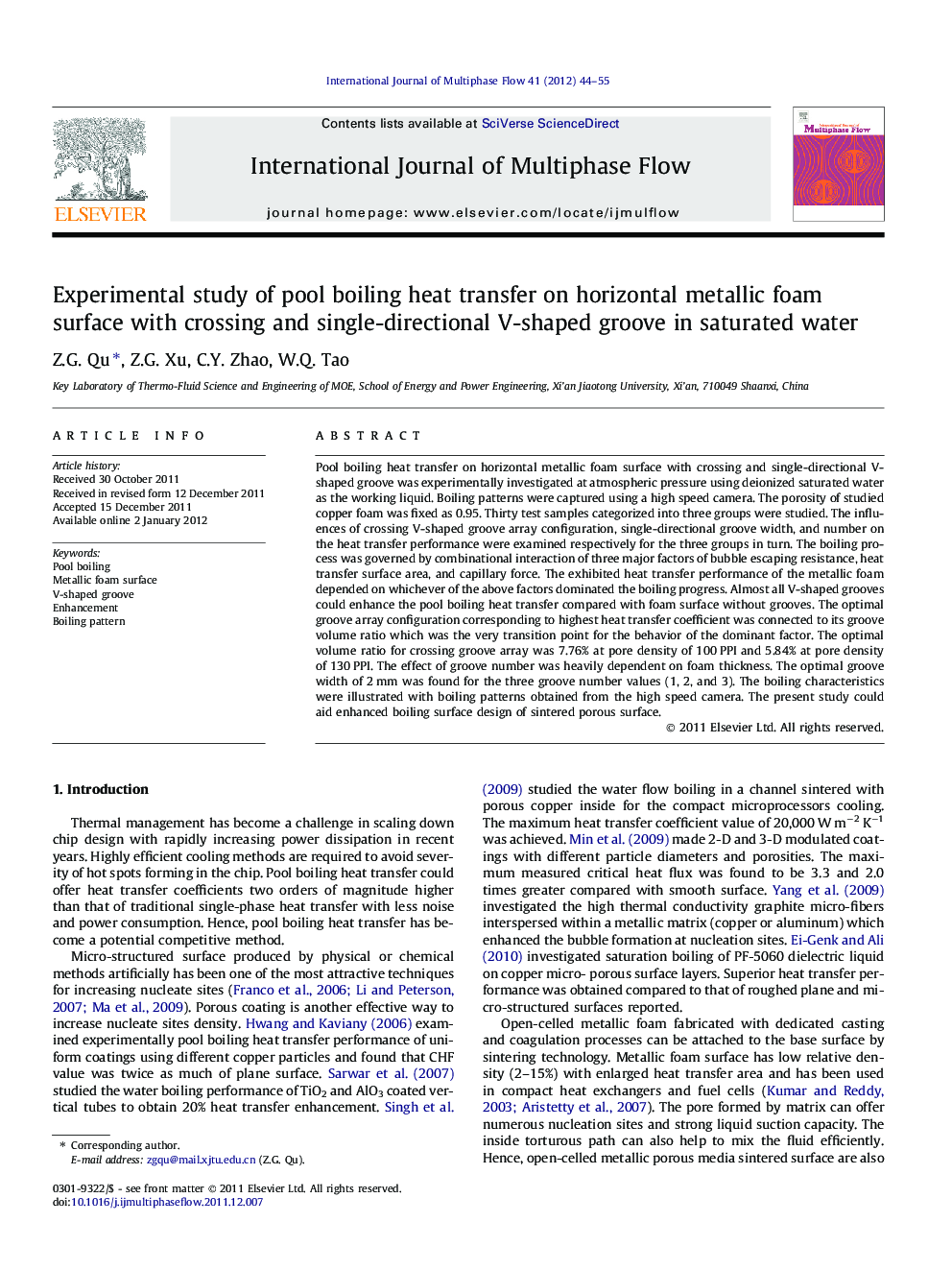| Article ID | Journal | Published Year | Pages | File Type |
|---|---|---|---|---|
| 667332 | International Journal of Multiphase Flow | 2012 | 12 Pages |
Pool boiling heat transfer on horizontal metallic foam surface with crossing and single-directional V-shaped groove was experimentally investigated at atmospheric pressure using deionized saturated water as the working liquid. Boiling patterns were captured using a high speed camera. The porosity of studied copper foam was fixed as 0.95. Thirty test samples categorized into three groups were studied. The influences of crossing V-shaped groove array configuration, single-directional groove width, and number on the heat transfer performance were examined respectively for the three groups in turn. The boiling process was governed by combinational interaction of three major factors of bubble escaping resistance, heat transfer surface area, and capillary force. The exhibited heat transfer performance of the metallic foam depended on whichever of the above factors dominated the boiling progress. Almost all V-shaped grooves could enhance the pool boiling heat transfer compared with foam surface without grooves. The optimal groove array configuration corresponding to highest heat transfer coefficient was connected to its groove volume ratio which was the very transition point for the behavior of the dominant factor. The optimal volume ratio for crossing groove array was 7.76% at pore density of 100 PPI and 5.84% at pore density of 130 PPI. The effect of groove number was heavily dependent on foam thickness. The optimal groove width of 2 mm was found for the three groove number values (1, 2, and 3). The boiling characteristics were illustrated with boiling patterns obtained from the high speed camera. The present study could aid enhanced boiling surface design of sintered porous surface.
► Boiling was governed by bubble escaping resistance, surface area, capillary force. ► Optimal groove volume ratio was 7.76% and 5.84% at 100 and 130 PPI pore density. ► Optimal groove width was 2 mm at the three groove number values (1, 2, and 3).
